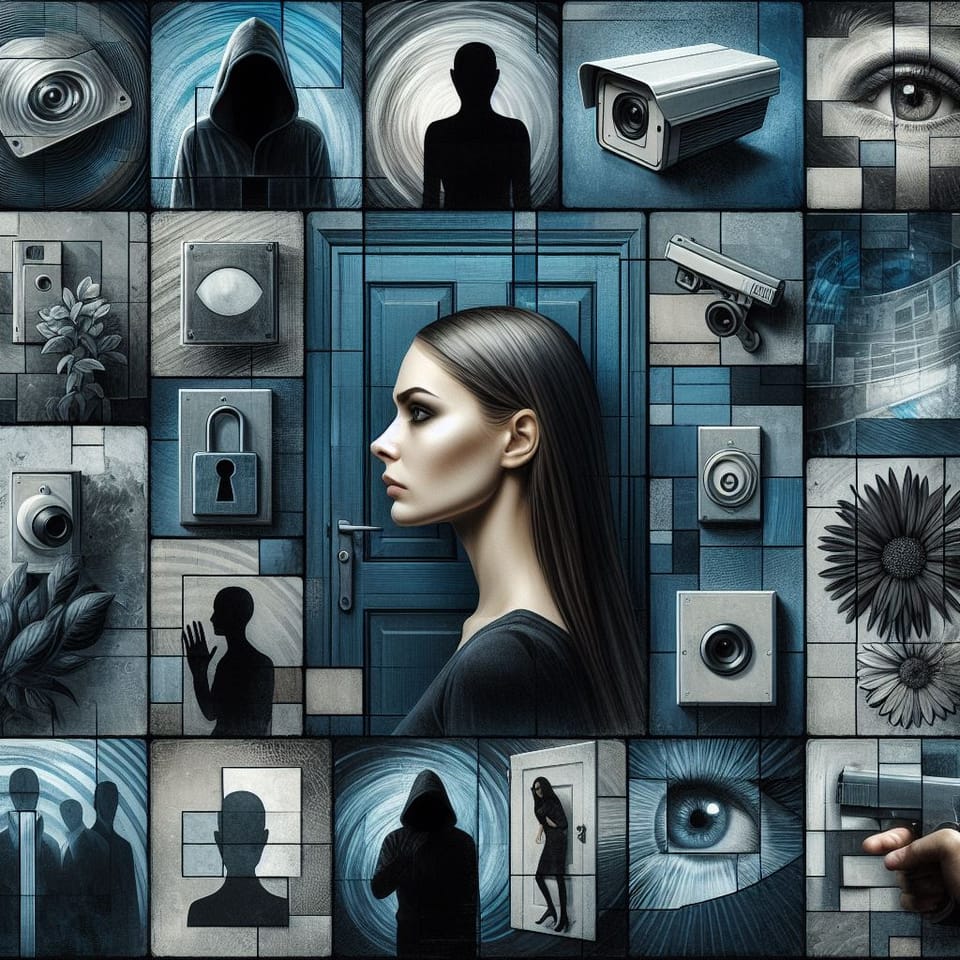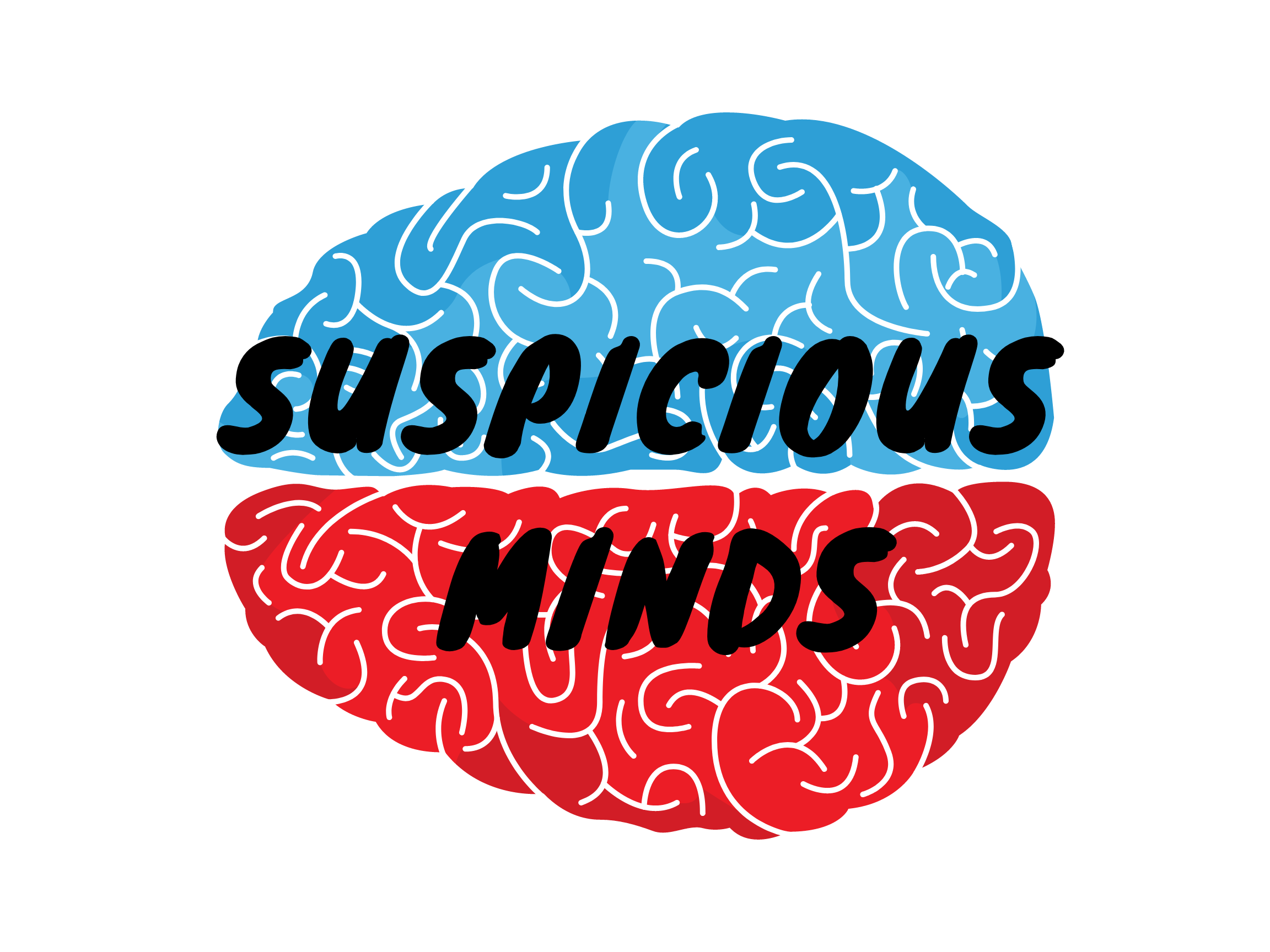More Suspicious Minds

This week’s Socos Academy explores the tension between trust and diversity, how the brain responds to strangers, and the impact of both on innovation.
Mad Science Solves...
I'm going to start off this week's mad science solves with an unabashed brag. I am asked to give talks around the world on topics ranging from artificial intelligence to global education policy to the Diversity-Innovation Paradox. On multiple occasions recently, audience members kindly shared, “It was the best talk I have ever experienced.” (If you're curious, those talks were The Neuroscience of Trust, The Future of Creativity, and AI & Education.)
Talks are fun, but I also enjoy briefings. Rather than a lecture hall full of students or a convention center packed with employees, a briefing is usually a small group of leaders looking for insights on a specific problem. The point is not to magically solve a problem in an hour or two, but rather to share how I would go about understanding the specific problem challenging them and take the room through core considerations, from my own research to the challenges experienced by other organizations. In essence a briefing is an opportunity to help find the right question for leaders stuck with the wrong answers.
I will admit that one of the reasons I enjoy doing briefings is because I have so much fun. I enjoy learning new secrets about the world and exploring how to take my understanding further. So, when I was recently asked to give a lecture for UC Berkeley’s “Engineering & Entrepreneurship” course, I decided to skip the lecture and run a briefing with 250 undergrad and graduate students. They submitted problem statements ahead of the session, and I chose 3 to explore, on the fly, in front of the class.
It was a blast! (I will admit that even grad students apparently don’t like to expose themselves in front of 250 peers. In contrast, F100 exec are more scared of the problems holding them back than of exposing the shocking truth that they don’t know everything.) I would love to do this again and turn it into a regular seminary.
Stage & Screen
Fall is almost here and Vivienne will be making her first trip to New Orleans for Techlearn 2023, and then she will be headed to Berlin! In honor of her return to Deustcheland, here's a video podcast Vivienne did for a German media group a few months ago. "AI a Force to be Reckoned With"

With talks booked in New York, Chicago, San Francisco, London,, Athens, Los Angeles, and more to come, the FALL is starting to FILL up!
Research Roundup
In keeping with this week’s book expert, “Suspicious Minds”, here are new findings on how trust affects social cognition.
The Burden of Trust
Over the last 3 years I’ve been studying the neuroscience of trust and the dramatically different way our brains respond to in-groups and out-groups. The most important finding is that sharing trust with people very different from us is effortful and subject to cognitive load, while trusting those very similar to us is largely automatic. Two new papers reveal the profound impact of this difference.
In the first experiment, participants played games that either had a “social (e.g., forecasting crime) or nonsocial (e.g., forecasting weather) learning context." Social contexts involving ingroup-outgroup signals disrupted learning in the game "despite repeated instructions that the [social] stimuli were unrelated” to the game.
Interestingly, the learning disruption was greatest in “participants who were more internally motivated to respond without prejudice”. Outgroup trust is effortful and puts a load on cognitive resources.
When it comes to health, that increased load can have dramatic impacts beyond disrupted learning. Patients were given "a laboratory-induced allergic reaction'. A confederate healthcare provider then "applied a treatment cream and told them it would relieve their allergic reaction", but in reality "the cream was inert (an unscented lotion)”. By design, the only difference in the interactions was the identity of the provider: male or female, Asian, Black, or White.
“White patients showed a weaker response to the treatment over time when it was administered by female or Black providers.” Trust changed patients' perception of medical treatment efficacy.
Effortful trust shared with outgroups competes for cognitive resources with those for attention, learning, and executive control. While this explains why full inclusion can be so hard to achieve within communities and organizations, it is also not the end of the story. We can train our brains to shift our internal borders between ingroups and outgroups and turn the short-term cost of sharing trust into a long-term gain for collective intelligence. Take a look at “Suspicious Minds” to learn more.
Books!
This week's preview is from The Tax on Being Different.

For more than 10 years, companies have asked me to make the business case for diversity. It turns out to be an easy case to make. Research ranging from theory-driven lab experiments to economic analyses of the global economy have shown again and again that organizations that are both diverse and inclusive outperform their competitors, particularly in innovation. And yet it’s 10 years later and I’m still being asked to make the argument, convince the same crowds. If diversity pays such easily measurable dividends, why does it seem so hard for so many organizations to share in those benefits. While there are some genuine bad actors in the world, can explicit bias alone account for these continuing challenges?
When confronted by this frustrating question during the pandemic, I decided to dig deeper into the problem—deeper than organizations or programs. Deeper than surveys of employee feelings or even ideas such as implicit bias. As a neuroscientist I decided to look inside our brains to explore the neuroscience of trust.
Before diving into the amygdala and anterior cingulate, let’s begin by clearly stating the problem…
The Diversity-Innovation Paradox
There is large research literature on the role of diversity in creative problem solving and collective intelligence. Within science, for example, elite teams slowly lose their impact and originality over time, even as their rate of research production goes up. Collaborations become more efficient as trust increases, but it robs them of the sparks necessary for innovation. Yet simply adding new collaborators increases originality, innovation, and multidisciplinary impact, in part by restoring the allostatic[1] tension between trust and novelty.
This phenomenon extends well beyond scientific innovation. Many years ago, I was on an advisory board for the Swiss banking giant Credit Suisse[2] when we conducted an analysis on the impact of women on corporate boards. The report revealed that boards with at least 1 woman had a 3% greater return to shareholders, and that boards with 3 or more women returned an average of 5% more[3]. And the results held true throughout the regions of the world.
In entrepreneurship, research tracing the cultural diversity of thousands of London companies found that diverse management teams, in terms of both ethnicity and immigration status, produced more product innovations than their competitors. Even in the unsexy world of fishery ecosystems, diverse groups better understood “complex feedbacks and interdependencies” than homogenous groups. However, this was not simply a process of locking all of the stakeholders in a room together; the diverse inputs of fishery stakeholders needed a proper aggregation process–simply throwing every idea and stakeholder together in a room produced no advantage[4].
From global corporate boardrooms to London entrepreneurs, from fishery ecosystems to scientific innovation, increased diversity brings increased value creation. Still skeptical? What if we looked at all 1.2 million doctoral dissertations published in the last 50 years? This is exactly what was done in one of my favorite papers of 2020. Using text analysis and machine learning, the authors analyzed the career trajectories of every US doctoral recipient since 1977[5]. They found that “demographically underrepresented students innovate at higher rates''. Those who were outliers in their fields best served the very purpose of science: explore the unknown and return with novel insights to lift society.
Unfortunately, this wasn’t the paper’s only finding. Those novel contributions from underrepresented scientists were less cited than their peers’. Despite contributing greater innovation, underrepresented scientists were less recognized and had worse career outcomes, robbing us all of their future impact. This phenomenon is known as the diversity-innovation paradox: those most likely to bring originality and insight to the world are the least likely to be recognized and rewarded. Issues of fairness aside, this paradox represents a major drag on global innovation.
Subscribers, keep reading the whole chapter and learn about the "Neuroscience of Trust".
[1] Yes, that is a rather nerdy way of describing people working together, but the dynamics of allostasis aren’t just a metaphor. The interactions of collaborators demands a massy, evolving process to maintain the desirable, if uncomfortable, tension at the heart of innovation.
[2] I wanted to understand how a bank works. And my experience is why my only surprise about Credit Suisse’s eventual collapse is that it doesn’t happen to large banks more regularly. Just wait—there’s more to come :)
[3] Companies with all-male boards had an unfortunate tendency to preside over catastrophic collapse via malfeasance and bad acquisitions. Shockingly, “boys will be boys” may not be sound corporate governance.
[4] In “Innovating Innovation” I wrote about the crucial factors necessary for maximizing collective intelligence, including novel incentive structures, flattening hierarchies, and managing the tension between ideation and maturation. I explore the idea of innovation “matchmakers” that pair the right people and ideas together at the right moment, serving a similar purpose to the structure interactions in fisheries research. Innovation has always been about more than serendipity at the watercooler.
[5] This is where AI shines. Imagine what it would have taken for humans to read every piece of published research since 1977 and systematically rate them for novelty and impact. AI’s “biases” reflect our own, producing a magical mirror that can occasionally speak hard truths.




